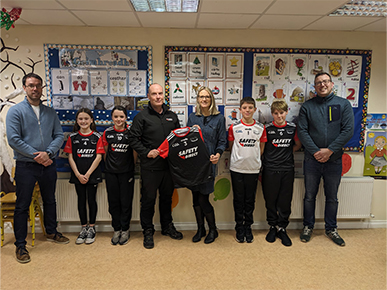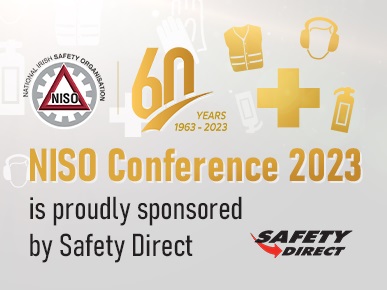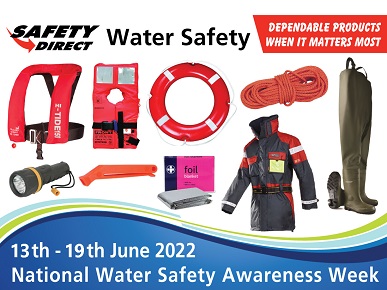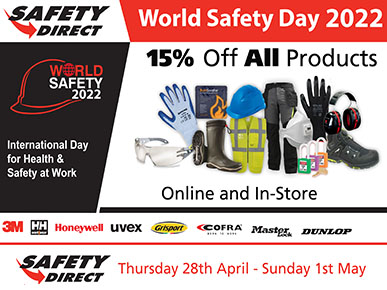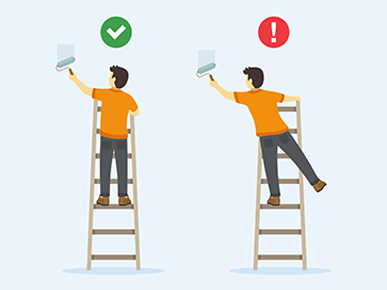How a Risk Assessment Can Improve Site Safety: World Safety Day 2022
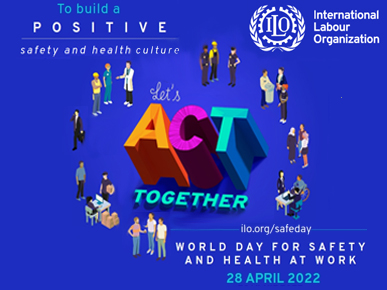
The World Day for Safety and Health at Work is celebrated this year on the 28th of April. Organised and championed by the ILO (International Labour Organisation), this year’s theme explores the topic of participation and dialogue in creating a positive health and safety culture in the workplace. The ILO defines a strong OHS (occupational health and safety) culture as one in which management and workers value and promote a safe and healthy workplace. It is built on communication and collaboration to align on the common goal of safety for all at work.
A key framework for creating and maintaining a safe workplace is built through the process of conducting a Risk Assessment. A Risk Assessment guides you through assessing a workplace in order to recognise and evaluate risks, and then implement guidelines to minimise them. It is the vital starting point for discussion and promotion of OHS, and should be an important step for any new project. Through conducting a Risk Assessment, both management and workers are able to align their goals, strategies and standards regarding how to prioritise safety and health in the workplace. This post explores how a Risk Assessment is conducted, what it achieves, and why it’s an important part of OHS.
Risk in the Workplace
Let’s take the example of a construction site. A typical construction site may pose many risks: machinery, heights, noise, working outdoors – the list can go on. A Risk Assessment breaks down each potential hazard and evaluates it before making recommendations for control.
Between 2016-2020, there were 3,278 instances of workplace injury in the construction sector of Ireland, based on figures from the Health and Safety Authority (HSA). In fact, the HSA appointed a specialised committee to advise on a Construction Safety Action Plan for 2022-2024 to reduce this figure. This committee identified several primary goals, one of which is to:
'Raise awareness of occupational health issues in the construction sector and promote improvements in work practices to help reduce the rate of death and ill health from occupational health hazards.’ - CSPAC
This coincides with the theme for this year’s World Safety Day, so this post will use the construction sector as an example to explore how a Risk Assessment can improve workplace safety. However, a Risk Assessment is a tool that should be used for any project, large or small. The steps can be applied in day-to-day activities – from changing a lightbulb to painting a ceiling – as well as in a workplace environment.
What is a Risk Assessment?
A Risk Assessment evaluates a workplace for hazards and makes recommendations to control them. It must be conducted before work is begun on the construction site. A Risk Assessment is a preventative tool, and should be continually referenced, maintained, and updated as work evolves on site.
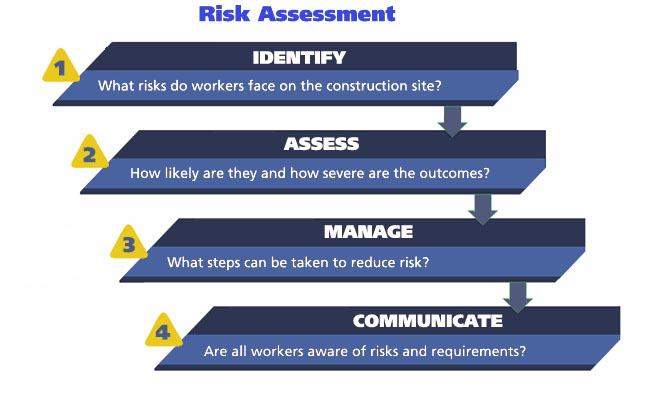
1) Identify
The first step is to identify potential hazards on site. Anything that can harm a worker is a potential hazard. In the construction sector this could be many things, such as machinery (noise, shrapnel, heat, chemicals), heights (ladders, scaffolding, falling tools), and even the general site (equipment, weather exposure, debris). Creating the list should draw on expertise and experience to ensure it is exhaustive, but as the site develops and changes it should be consistently added to and updated.
2) Assess
The next step is to evaluate each risk. How likely is it to harm someone, and how severe could the harm be? The likelihood of harm depends on the environment, the work activities/equipment, and how often workers will be exposed to the risk. The severity of the risk can be measured in possible outcomes, ranging from mild injury to disability or death. Evaluating the risks in this way allows you to rank them, ranging from low to high risk. This helps to organise your list and give priority to those that pose the most danger. It is also important that workers understand not only potential risks, but that these are linked to potential consequences.
3) Manage
With a complete list of ranked hazards, the next step is to implement controls to manage and reduce them. Controls can be anything from modifying equipment (barriers, tethering), training staff (manual handling, machinery), mandating applicable PPE (hi-vis, safety boots, eye, head, ear protection), or introducing signage and logbooks (lockouts and tagouts, site signage). A combination of all of the above is best, and these control measures should be recorded and monitored as part of the management process. It is important to note that a Risk Assessment is only as effective as its controls: a list of evaluated risks will not prevent harm unless there is real-world action that addresses and actively reduces these risks.
Selecting the PPE for your site is a critical component of a Risk Assessment, and we recently created a shortlist of some of the best PPE options that can help you make your decisions. The protective equipment you use can play a significant role in reducing risk and keeping workers and sites safe, and a Risk Assessment can help you determine exactly what type of PPE is required.
4) Communicate
Finally, the most important step is to ensure all workers are involved in the conversation around risk management. Site safety is applicable to everyone on site, so it is crucial that risks and their controls are communicated with continued emphasis, input and reinforcement.
World Safety Day 2022 focuses on a healthy culture at work around safety, one built on participation and dialogue. A Risk Assessment is an excellent tool to start this off: it creates an opportunity to open communication about OHS and build a culture that contributes positively to workers’ health and safety. It also establishes clearly what is required of workers on site, such what types of PPE are required, by whom, and when.
The benefits of a Risk Assessment can also be applied to day-to-day tasks. The principal concepts of identify, assess, manage and communicate are just as important when using a hedge-trimmer in the garden as they are when working on a construction site. Where there is risk involved, understanding and managing this risk is crucial to prioritising health and safety both in the workplace and in daily life.
In support of World Safety Day 2022, we are offering 15% Off All Products In-Store and Online with discount code WSD15 from Thursday 28th April – Sunday 1st May. Terms and Conditions apply.






